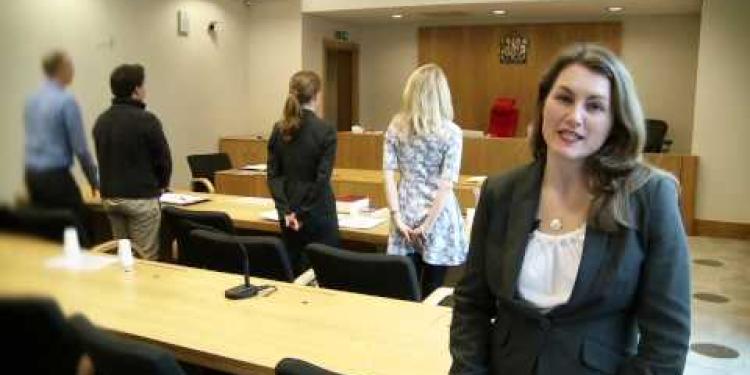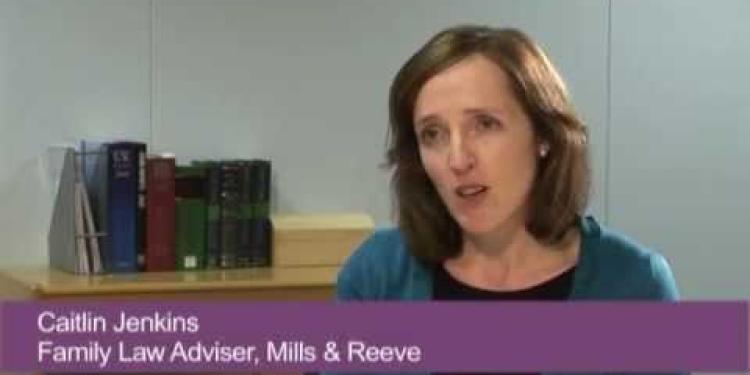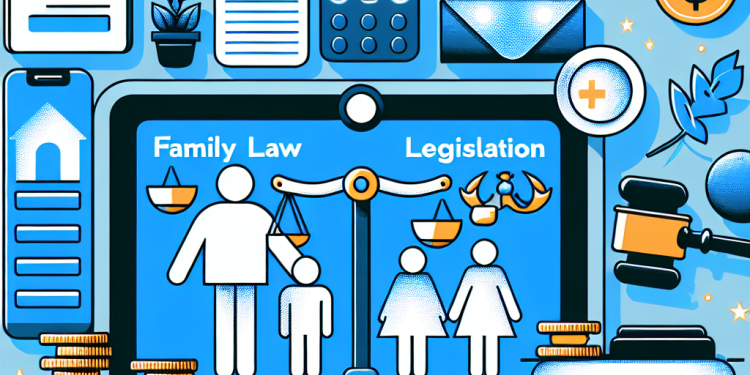Important Information On Using This Service
- Ergsy carefully checks the information in the videos we provide here.
- Videos shown by YouTube after a video has completed have NOT been reviewed by ERGSY.
- To view, click the arrow in the center of the video.
Using Subtitles and Closed Captions
- Most of the videos you find here will have subtitles and/or closed captions available.
- You may need to turn these on and choose your preferred language.
Turn Captions On or Off
- Go to the video you'd like to watch.
- If closed captions (CC) are available, settings will be visible on the bottom right of the video player.
- To turn on captions, click settings.
- To turn off captions, click settings again.
Find A Professional
More Items From Ergsy search
-
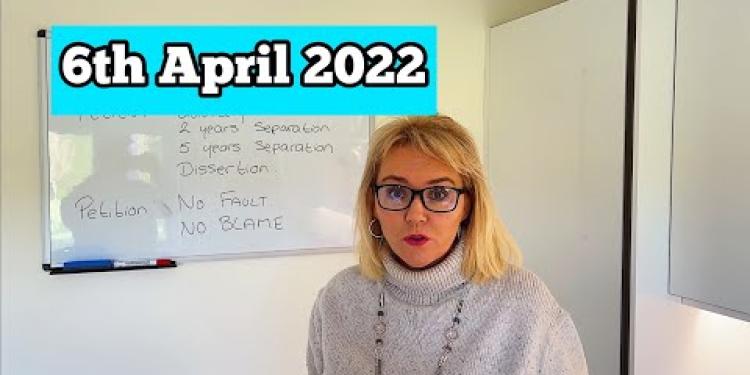
NO FAULT DIVORCE (What is there to know)
Relevance: 100%
-

Divorce - How To Rebuild Your Life After Losing Everything
Relevance: 65%
-

Divorce UK (England and Wales) | UK Divorce Process and Overview Explained PART 1 | BlackBeltBarrister
Relevance: 63%
-

A Guide to the Divorce Process
Relevance: 60%
-

I'm Getting a Divorce | Tips From a Divorce Lawyer
Relevance: 59%
-

Understanding Your Rights in Divorce Proceedings
Relevance: 45%
-

Understanding Your Rights During Divorce Proceedings in the UK
Relevance: 40%
-

Divorce Step By Step - Form E - Capital
Relevance: 34%
-

Navigating Post-Divorce Finances Amidst Economic Challenges
Relevance: 29%
-
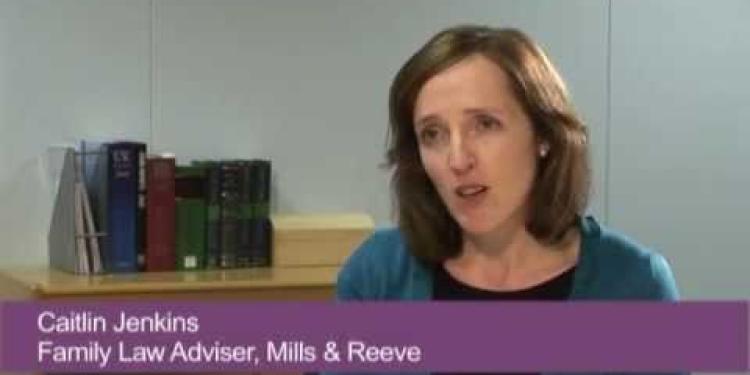
Divorce UK: What happens with the money in a divorce?
Relevance: 28%
-

Ultimate Guide to Financial Disclosure on Divorce in the UK
Relevance: 17%
-

Navigating Changes in Family Law Post-Brexit
Relevance: 15%
-

The 4 Steps to Agree a Financial Settlement on Divorce UK
Relevance: 14%
-

Impacts of Recent Changes to Family Law Legislation
Relevance: 12%
-

The Family Court without a Lawyer - Video 1 of 3
Relevance: 10%
-

The Family Court without a Lawyer
Relevance: 7%
-

The Family Court without a Lawyer - Video 3 of 3
Relevance: 6%
-
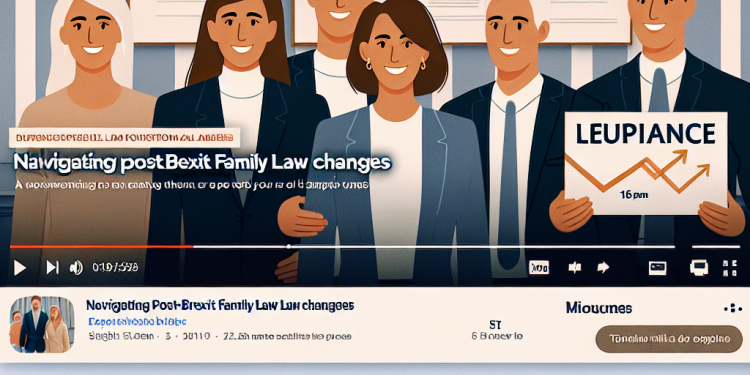
Navigating Post-Brexit Family Law Changes
Relevance: 5%
-

Helen Starkie, Solicitor, Bath, UK
Relevance: 5%
-

The Family Court without a Lawyer - Video 2 of 3
Relevance: 4%
-

How To Protect Family Assets | Trusts Explained UK
Relevance: 4%
-
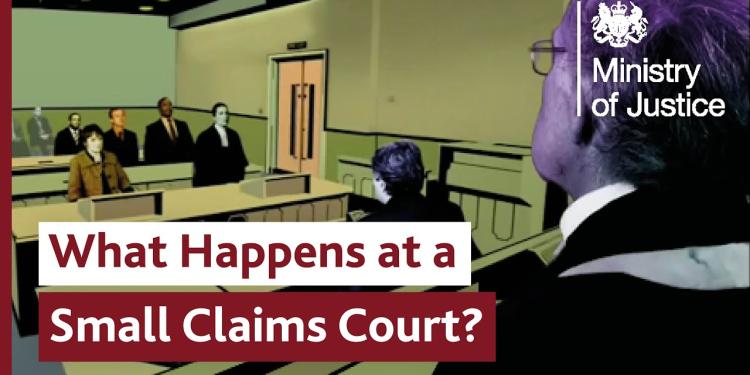
What Happens at Small Claims Court? Making a Court Claim for Money
Relevance: 3%
-

Mortgage Turned Down In The UK - Why mortgage applications are declined
Relevance: 3%
-

Fire Safety At Home
Relevance: 3%
-

BSL - Causes of panic disorder
Relevance: 3%
-

Can I get a Buy to Let Mortgage With My 18 Year Old Son
Relevance: 3%
-

Heart Failure : Heart failure that cannot pump
Relevance: 2%
-

Turned down for a mortgage? Find out why and what to do
Relevance: 2%
-
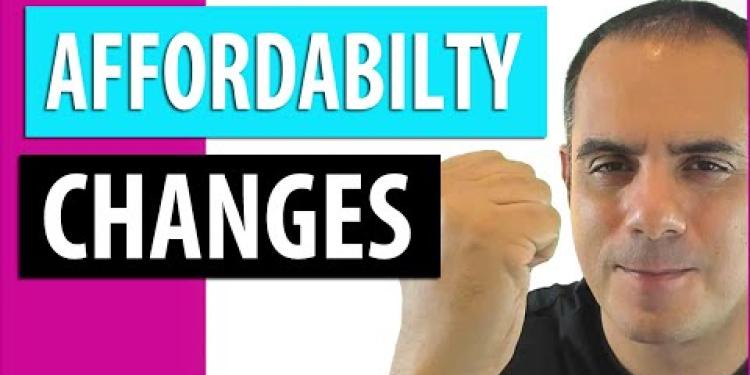
Mortgage Regulator removes the need for further affordability stress tests
Relevance: 2%
-

How to represent yourself in family court in England and Wales
Relevance: 2%
-
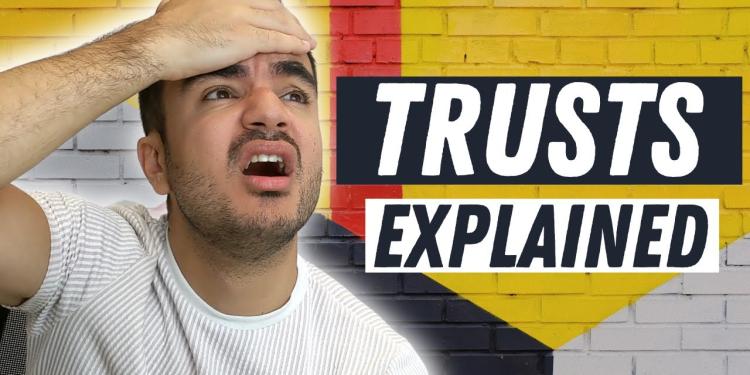
TRUSTS EXPLAINED I HOW TO PROTECT FAMILY ASSETS
Relevance: 2%
-

Steps to Take When Facing Domestic Abuse
Relevance: 1%
-

What is Gaslighting?
Relevance: 1%
-

Understanding Mental Health in Children
Relevance: 1%
-

Will and Probate Solicitor Bath
Relevance: 1%
-
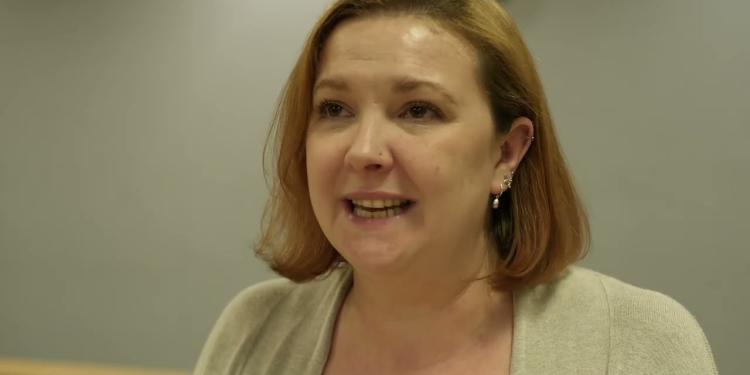
Magistrates in the Family Court: A Private Law Case
Relevance: 1%
-
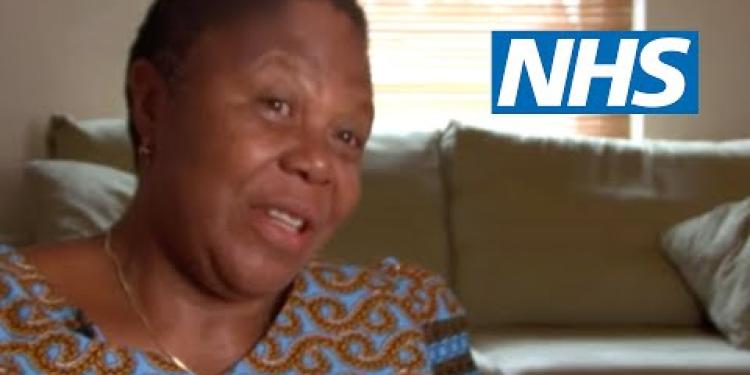
Sickle cell anaemia | NHS
Relevance: 1%
-

Navigating Child Custody Laws in the UK
Relevance: 1%
-

Why people take out Secured Loans and why do some brokers charge so much
Relevance: 1%
-

Helen Starkie, Bath Solicitor for Wills and Probate Law
Relevance: 1%
Understanding No-Fault Divorce in the United Kingdom
What is No-Fault Divorce?
No-fault divorce is a legal process allowing couples to dissolve their marriage without the need to prove wrongdoing or fault by either party. Rather than attributing blame, the marriage is acknowledged to have irretrievably broken down. This simplifies and often speeds up the process, while reducing the emotional stress on both parties involved.
Historical Context
Prior to the introduction of no-fault divorce in the UK, divorcing couples were required to prove one of several fault-based reasons, like adultery, unreasonable behavior, or desertion. This often led to unnecessary conflict and made the process more complicated and acrimonious.
Legal Changes in the UK
The no-fault divorce law was enacted in the UK through the Divorce, Dissolution and Separation Act 2020. This legislation introduced significant changes to the divorce process, making it more accessible and less confrontational. The law came into force on April 6, 2022, allowing couples to cite "irretrievable breakdown" as the sole ground for divorce.
Key Features of the New Law
The new no-fault divorce law includes several key features:
- No need to provide evidence of fault or wrongdoing.
- A minimum period of 20 weeks from the start of proceedings to when the Conditional Order can be applied for, providing a reflection period.
- The possibility for couples to make a joint application, reflecting a mutual decision to part ways amicably.
- The removal of the ability to contest a divorce, barring instances of coercion or fraud.
Benefits of No-Fault Divorce
No-fault divorce offers numerous benefits, including reduced conflict between spouses. By eliminating the need for blame, it promotes a more amicable resolution, which is particularly important when children are involved. Additionally, it streamlines the legal process, potentially reducing both the time and costs associated with divorce proceedings.
How to File for a No-Fault Divorce
To file for a no-fault divorce, one or both parties must complete a divorce application form, citing "irretrievable breakdown" as the reason. The application can be submitted online or via post to the nearest family court. After a mandatory reflection period, the couple can proceed to obtain a Conditional Order, followed by a Final Order that legally terminates the marriage.
Conclusion
The introduction of no-fault divorce in the United Kingdom marks a significant shift towards a more modern, compassionate approach to ending a marriage. By removing the adversarial elements from the process, it helps couples move forward in a more dignified and less contentious manner.
Understanding No-Fault Divorce in the United Kingdom
What is No-Fault Divorce?
No-fault divorce is a way for married couples to end their marriage. They don’t have to prove that someone did something wrong. The marriage is just seen as not working anymore. This makes things simpler and less stressful for both people.
Historical Context
Before no-fault divorce, couples had to give reasons like cheating or bad behavior to get a divorce. This often caused fights and made things harder.
Legal Changes in the UK
The no-fault divorce law started with the Divorce, Dissolution and Separation Act 2020. This law made getting a divorce easier and less of a fight. It began on April 6, 2022, allowing couples to say their marriage has "irretrievably broken down" as the reason for divorce.
Key Features of the New Law
Here are some important parts of the new no-fault divorce law:
- No need to show anyone did something wrong.
- There is a 20-week wait from the start to apply for the first order, giving time to think.
- Couples can apply for divorce together if they both agree.
- It is harder to stop a divorce once someone applies, unless there is danger or fraud.
Benefits of No-Fault Divorce
No-fault divorce has many benefits. It reduces fights between partners. Not needing to blame anyone helps things stay friendly, which is good for kids. It also makes the legal steps faster and may cost less.
How to File for a No-Fault Divorce
To get a no-fault divorce, one or both people fill out a divorce form. They say "irretrievable breakdown" is the reason. They can send this form online or by mail to a family court. After waiting a while, they can ask for a Conditional Order, and then a Final Order to end the marriage.
Conclusion
No-fault divorce in the United Kingdom is a big change. It makes ending a marriage more caring and less like a fight. This helps people move on in a better way.
Frequently Asked Questions
What is a no fault divorce?
A no fault divorce allows a couple to divorce without one spouse needing to prove that the other is at fault for the breakdown of the marriage. It acknowledges that the marriage has broken down irretrievably without assigning blame.
When did no fault divorce become law in the UK?
No fault divorce became law in the UK on 6th April 2022 under the Divorce, Dissolution and Separation Act 2020.
What are the main grounds for a no fault divorce?
The only ground for a no fault divorce is that the marriage has broken down irretrievably.
Do both spouses need to agree to a no fault divorce?
No, only one spouse needs to state that the marriage has broken down irretrievably to initiate a no fault divorce.
How long does it take to finalize a no fault divorce?
The divorce process typically takes a minimum of 26 weeks from the date of application to finalize, although the time can vary depending on individual circumstances.
Do I need to provide evidence of the marriage breakdown in a no fault divorce?
No, you do not need to provide evidence or proof of the marriage breakdown in a no fault divorce.
Can a no fault divorce application be contested by the other spouse?
No, a no fault divorce application cannot be contested. Once one spouse states that the marriage has broken down irretrievably, the divorce can proceed.
Is there a minimum period of separation required before applying for a no fault divorce?
No, there is no minimum period of separation required before applying for a no fault divorce.
How does a no fault divorce affect financial settlements?
A no fault divorce does not automatically settle financial matters. Financial settlements are considered separately and may require negotiation or court intervention.
How does a no fault divorce impact child custody arrangements?
Child custody arrangements are handled separately from the divorce proceedings and are based on the best interests of the child, regardless of the divorce type.
Do I need a solicitor for a no fault divorce?
Although it is possible to handle a no fault divorce yourself, seeking legal advice from a solicitor is often recommended to ensure all legal requirements are met and to assist with any financial or child arrangements.
Are there any waiting periods involved in a no fault divorce?
Yes, there is a minimum overall waiting period of 20 weeks from the start of proceedings and an additional six-week waiting period after the conditional order before the final order can be issued.
How much does a no fault divorce cost?
The cost of a no fault divorce can vary. The court fee for filing for divorce is currently £593, but additional costs may arise if you use solicitors or require additional services.
Can civil partnerships be dissolved using no fault principles?
Yes, civil partnerships can be dissolved using the same no fault principles that apply to marriages.
What documents are needed to apply for a no fault divorce?
You will need your marriage certificate or civil partnership certificate, proof of identity, and the completed divorce application form to apply for a no fault divorce.
What is a No Fault Divorce?
A "No Fault Divorce" is when two people decide to end their marriage. In this type, no one has to say the other person did something wrong.
This makes it easier for people to get a divorce because they don't have to argue about what happened.
To understand better, you can use tools like pictures or videos. Sometimes, talking to someone who knows about divorces, like a counselor, can help too.
A no fault divorce is a way for a couple to end their marriage. They do not have to say one person did something wrong to cause the marriage to end. It means they agree the marriage cannot be fixed, but they do not blame each other.
When did no fault divorce start in the UK?
No fault divorce means you don’t have to blame anyone to end a marriage. It became a law in the UK in April 2022.
If you want to learn more or need help understanding, you can:
- Ask someone you trust to explain it to you.
- Use simple online videos or websites that talk about it.
No fault divorce started in the UK on 6th April 2022. This is because of a new law called the Divorce, Dissolution and Separation Act 2020.
Here are some tools to help you understand better:
- Use a dictionary to look up words you don't know.
- Ask someone to explain tricky parts to you.
- Take your time and read slowly.
Why do people get a no-fault divorce?
Sometimes, people who are married decide to stop being married. A no-fault divorce means no one is blamed. Here are reasons why people might choose this:
- They don’t love each other anymore.
- They have changed and want different things.
- They believe they will be happier apart.
If reading is hard, try using these tools:
- Text-to-speech: This reads words out loud.
- Picture stories: They show ideas with pictures.
The only reason you can get a no-fault divorce is if you can show that the marriage is broken and can't be fixed.
Do both partners have to say 'yes' to a no fault divorce?
A no fault divorce means you stop being married without blaming anyone.
Yes, both people need to say 'yes' for a no fault divorce to happen.
If you find this hard, you can:
- Ask a friend or family member to talk about it with you.
- Use a simple dictionary to look up words you don't know.
- Work with a helper who knows about no fault divorce.
No, just one person in the marriage needs to say that the marriage isn't working anymore to start a no-fault divorce.
How long does it take to finish a no-fault divorce?
A no-fault divorce is when two people decide to end their marriage without blaming each other.
It can take a few months to finish. This is because there are steps to follow, like filling out forms and waiting for the court.
Using a calendar to keep track of important dates can help. You might also think about asking someone you trust for help, like a friend or family member.
Getting a divorce usually takes at least 26 weeks from when you first ask for it. It might take a shorter or longer time, depending on your situation.
Do I need to show proof that my marriage ended in a no fault divorce?
No, you don't need to show proof. In a no fault divorce, you can say that your marriage isn't working without giving reasons. It's okay to say you want to end the marriage simply because you both agree.
If you need help understanding more, you can:
- Talk to someone who knows about no fault divorce, like a lawyer.
- Look for easy guides online that explain it simply.
- Ask a friend or family member to help explain it.
No, you do not need to show proof or evidence that your marriage did not work for a no-fault divorce.
Can the other person argue about a no-fault divorce?
A no-fault divorce means no one is blamed for the marriage ending. Sometimes, the other person may not agree with the divorce. They might want to talk about it.
Here are some things that might help:
- Ask someone you trust to help you understand.
- Talk to a lawyer who knows about divorces.
- Look at easy books or websites about divorce.
No, you cannot argue against a no-fault divorce. If one person says the marriage is broken and can't be fixed, the divorce will happen.
Helpful tips:
- Read slowly: Take your time and read one word at a time.
- Use a finger: Point to each word as you read.
- Break it down: Split big words into smaller sounds.
- Ask for help: If you don’t understand, ask someone to explain.
- Use tools: You can use apps that read text out loud.
Do we need to be apart for a certain time before asking for a no-fault divorce?
No, you don't have to wait any time before asking for a no-fault divorce.
What happens to money when people get a no fault divorce?
When two people decide to end their marriage without blaming each other, it is called a no fault divorce. They must agree on how to share their money and things.
Here are some points to think about:
- Talk together and try to be fair.
- Use pictures or lists to show what you own.
- Ask for help from a family member or a friend if needed.
- You can also see a lawyer for advice.
A no fault divorce means a couple can break up without blaming each other. But it doesn't sort out money issues on its own. You might need to talk and agree about money separately. Sometimes, you might need help from a judge to decide about money.
How does a no-fault divorce affect who looks after the children?
A no-fault divorce means that parents do not blame each other to get a divorce. They just want to end the marriage.
When parents divorce, they need to decide who will take care of the children. This is called child custody.
In a no-fault divorce, the decision about child custody focuses on what is best for the children. It does not depend on blaming one parent.
Parents and the court will look at things like where the children will be happiest and safest and how parents will share time with them.
If you need help, you can:
- Talk to a family counselor.
- Use a mediator to help you agree.
- Speak to a lawyer who knows about family law.
When parents split up, who looks after the child is decided separately from the divorce. The decision is made to keep the child happy and safe, no matter how the parents are divorcing.
Do I need a lawyer for a no-fault divorce?
Are you getting a no-fault divorce? You might wonder if you need a lawyer. A no-fault divorce means no one is blamed for the marriage ending. Here’s what you should know:
- You don't have to have a lawyer, but they can help.
- A lawyer can make sure everything is fair.
- A lawyer can help with all the forms and rules.
You can also use helpful tools like:
- Online guides about divorce.
- Services that help with filling out forms.
Remember, it's okay to ask for help if you need it.
You can do a no fault divorce by yourself. But it is a good idea to get help from a lawyer. A lawyer can make sure you do everything right and help with money or plans for children.
Do you have to wait for a no-fault divorce?
Yes, you have to wait at least 20 weeks from the start. Then, after you get the first order, you wait another 6 weeks to get the final order.
How much does a no fault divorce cost?
Getting a no fault divorce means you don't blame anyone. It usually costs some money.
Here are ways to find out how much it costs:
- Ask a lawyer. They can help you know the price.
- Check online for websites that talk about divorce costs.
- Use a calculator online to help see the cost.
These tools can make it easier to understand.
The cost of a divorce where no one is blamed can change. Right now, it costs £593 to ask the court for a divorce. You might have to pay more money if you hire lawyers or need extra help.
Can you end a civil partnership without blaming anyone?
Yes, civil partnerships can end in the same way as marriages. You don't have to say anyone did anything wrong.
What papers do you need to ask for a no fault divorce?
To ask for a no fault divorce, you need some important papers.
Here is a simple list of what you might need:
- Your marriage certificate
- A form to ask for the divorce
- Any papers about your children (if you have any)
- Money papers, like bank details (if needed)
You can ask a friend or family member for help if you are not sure. Also, talking to a lawyer can be a good idea. They can help you get the right papers.
You need to have some important papers to ask for a divorce without blame:
- Your marriage paper or civil partnership paper.
- Something that shows who you are, like a passport or ID card.
- A divorce form that you have filled out.
These things will help you get your divorce started.
Useful Links
Useful links from: Divorce UK (England and Wales) | UK Divorce Process and Overview Explained PART 1 | BlackBeltBarrister
- NHS - Coping with divorce The NHS provides guidance and advice on dealing with the emotional and mental health impacts of divorce and separation.
- Relate - Divorce and Separation Support Relate offers advice, relationship counselling, workshops, and mediation services to support people going through divorce or separation.
- Citizens Advice - Advice for Divorcing or Separating Citizens Advice provides information on the process of getting divorced, including legal advice, financial considerations, and child custody issues.
- Mind - Support through Divorce Mind offers resources and support for mental health issues related to divorce, helping individuals manage the emotional and psychological challenges.
Useful links from: Divorce - How To Rebuild Your Life After Losing Everything
- NHS - Tips on rebuilding your life after divorce The NHS provides tips and resources on how to look after your mental health and rebuild your life after a divorce, focusing on emotional wellbeing and seeking support.
- Relate - Divorce and Separation Support Relate offers guidance and counselling support for anyone going through a divorce. They focus on emotional support and practical advice to help you move forward.
- Mind - Coping with a breakup or divorce Mind is a UK charity that provides advice and support to empower anyone experiencing a mental health problem. They offer a guide to coping with separation and divorce.
- Turn2us - Financial support after a divorce Turn2us helps people in financial need gain access to welfare benefits, charitable grants and other financial help, during and after a divorce.
Useful links from: Understanding Your Rights in Divorce Proceedings
- NHS - Help for domestic violence and abuse NHS resource offering guidance and support for individuals experiencing domestic violence, including services that might be useful during divorce proceedings.
- Relate - Understanding Divorce Relate provides comprehensive information to help you understand your rights and the processes involved in divorce.
- Rights of Women - Family Law Rights of Women offers a range of resources and legal advice on family law, including divorce, to support women's legal rights.
- Citizens Advice - Ending a Marriage Citizens Advice provides detailed information on the steps involved in ending a marriage and understanding your legal rights throughout the divorce process.
Useful links from: Handling Inheritance Disputes Legally
- NHS: Dealing with grief and loss Provides information and support for handling grief and loss, which can be useful in the context of inheritance disputes.
- Citizens Advice: Disputing a Will Offers guidance on what to do if there is a dispute over a will, covering legal steps and support options.
- Age UK: Making a Will Information on making a will, which can help prevent disputes from arising, and advice on what to do if there is a dispute.
- The Law Society: Inheritance Disputes Provides comprehensive information about handling inheritance disputes legally, with guidance on finding legal support.
Useful links from: Impacts of Recent Changes to Family Law Legislation
- NHS - Support for Parents Information and support for parents, including the impact of recent family law changes, provided by the NHS.
- Relate - How Changes in Family Law Can Affect You A UK charity providing support and advice on how recent family law changes can affect family relationships and parenting.
- Citizen's Advice - Family Law Citizen's Advice offers guidance on family law, including information on recent legislative changes and how they may impact families.
- Family Lives - Family Law Changes Family Lives provides advice and resources on how the latest changes to family law legislation impact families.
Useful links from: Navigating Child Custody and Visitation Rights in Modern UK
- NHS - Child Custody: Rights and Welfare Provides information on child custody, focusing on the rights and welfare of the child. Includes guidance on legal processes and resources for ensuring the child's best interests.
- NSPCC - Child Custody and Parenting After Separation Offers resources and advice on handling child custody and parenting responsibilities following separation. Ensures that child safety and well-being are prioritized during custody arrangements.
- Relate - Parental Separation and Child Custody Relate provides support and counseling for families experiencing separation and divorce, focusing on child custody issues. Offers practical advice to ensure children’s emotional and psychological needs are met.
- Gingerbread - Child Custody and Contact Arrangements Gingerbread offers guidance for single parents, including detailed information on child custody and contact arrangements. Provides support to help navigate legalities and maintain healthy relationships.
Useful links from: Understanding Your Rights: Legal Support for Families During Economic Turbulence
- Citizens Advice Provides free, independent, confidential, and impartial advice to everyone on their rights and responsibilities. They offer help across a wide range of issues including legal support, debt advice, and benefits guidance.
- Turn2us A national charity helping people in financial hardship to gain access to welfare benefits, charitable grants, and support services. Their website includes tools and resources to find support and advice for managing during economic turbulence.
- NHS - Help with Health Costs Information from the NHS on what financial support is available to help with health costs, including prescriptions, dental services, and optical care. This resource can be crucial for families trying to manage their healthcare expenses.
- Shelter A charity that provides advice and support for those facing housing and homelessness issues. Shelter offers legal guidance on tenant rights, eviction protection, and other housing-related legal matters, which can be vital during economic crises.
Useful links from: Navigating Post-Brexit Family Law Changes
- UK Government - Family Law after Brexit Official UK government guidance on handling family law disputes following Brexit, including jurisdiction and enforcement of family law decisions.
- NHS - Family and Relationships Support NHS resource offering support and advice on family and relationship issues, with potential impacts of legal changes post-Brexit.
- Citizens Advice - What Brexit means for your family law Citizens Advice provides detailed resources on how Brexit impacts family law, including child custody, maintenance, and divorce.
- Relate - Brexit and Relationship Support Relate offers advice and support for individuals and families affected by changes in relationship law due to Brexit.
Useful links from: Understanding Your Rights During Divorce Proceedings in the UK
- NHS - Mediation Information from the NHS on mediation services, which can be a helpful resource during divorce proceedings to resolve disputes amicably.
- Relate - Divorce and Separation Relate is a UK charity that provides relationship support, including guidance on separation and divorce. This resource can help you understand your rights and the support available.
- Citizens Advice - Ending a marriage Citizens Advice offers comprehensive information on the legal aspects of ending a marriage, including your rights and the processes involved.
- Women's Aid - Divorce and Financial Aid Women's Aid provides guidance specifically for women, including information on divorce and financial settlements, ensuring your rights are protected during the process.
Useful links from: Navigating Post-Divorce Finances Amidst Economic Challenges
- NHS: Sorting Out Your Finances After Separation This NHS page provides advice on how to manage your finances after a separation or divorce, including tips for budgeting, seeking financial advice, and understanding your entitlements.
- Citizens Advice: Dealing with Debt and Money Problems Citizens Advice offers a comprehensive guide to managing debt and money issues, providing practical steps and resources for individuals facing financial difficulties post-divorce.
- Relate: Getting Help with Debt After Divorce Relate, a leading charity focusing on relationships, provides guidance on coping with debts and financial pressures following a divorce, including how to start afresh and rebuild financial stability.
- Turn2us: Financial Assistance for Individuals Turn2us is a UK charity that helps people in financial hardship access welfare benefits, charitable grants, and other financial support services. They offer specific advice for individuals going through divorce or separation.
Useful links from: Navigating Changes in Family Law Post-Brexit
- NHS - Divorce and Separation NHS page providing advice on coping with emotional and practical issues related to divorce and separation.
- Relate Relate offers counseling services for individuals and families dealing with relationship issues, including those arising from family law changes post-Brexit.
- Citizens Advice Citizens Advice provides information and support on various family law matters, helping individuals understand their rights and navigate legal changes post-Brexit.
- Rights of Women Rights of Women offers legal advice and information specifically to women, including matters of family law impacted by Brexit.
Useful links from: Upcoming Changes to Parental Leave Policies in the UK
- NHS - Maternity and Paternity Leave An overview of maternity and paternity leave, including entitlement, pay information, and links to additional resources provided by the NHS.
- Maternity Action - Parental Leave Maternity Action provides detailed guidance on parental leave policies, including upcoming changes, rights, and benefits for parents in the UK.
- Working Families - Policy and Campaigns Keep up-to-date with the latest news and campaigns on parental leave policies from Working Families, a leading UK charity focused on work-life balance.
- Gingerbread - Employment Rights Gingerbread offers detailed advice on employment rights, including parental leave and entitlements for single-parent families in the UK.
Useful links from: Navigating the Changes to Parental Leave Regulations
- NHS Employers - Parental Leave NHS Employers provides detailed information on the policies and guidelines for parental leave, helping NHS staff navigate the regulations effectively.
- Gov.uk - Parental Leave The official UK government website offers comprehensive details and eligibility criteria for statutory parental leave, along with how to apply.
- Working Families - Parental Leave Advice Working Families, a UK-based charity, provides up-to-date advice and support for parents and carers on navigating parental leave and the associated rights and benefits.
- NCT - Maternity and Paternity Leave The National Childbirth Trust (NCT) offers guidance and resources on maternity and paternity leave, helping new parents understand their entitlements.
Useful links from: Divorce Step By Step - Form E - Capital
- NHS - Divorced or Separated: Supporting your Mental Health This NHS page offers advice on how to look after your mental health during a divorce or separation, including coping strategies and where to find support.
- Relate - Help with Divorce and Separation Relate is a UK charity that provides relationship support, including advice and counselling services for those going through separation and divorce.
- Citizens Advice - Getting a Divorce Citizens Advice offers guidance on the legal and practical aspects of getting a divorce in the UK, including an overview of Form E and financial settlements.
- Gingerbread - Single Parents and Divorce Gingerbread is a UK charity that provides advice and support for single parents, including information on how to navigate divorce and separation.
Useful links from: The Family Court without a Lawyer
- NHS - Support for Families Going to Court Information and resources provided by the NHS for families who are going to court without a lawyer. Offers guidance on what to expect and how to prepare.
- Citizen's Advice - Going to Court Comprehensive guidance from Citizen's Advice on handling court proceedings, including family court, without legal representation.
- Family Rights Group A charity organization offering advice and support for families involved in child protection and family court proceedings. Provides guides, resources, and helplines.
- National Family Mediation Charity specializing in family mediation services to help resolve disputes and issues without going to court. Includes information on mediation as an alternative to court and how it works.
Useful links from: The Family Court without a Lawyer - Video 1 of 3
- NHS - Mental health and wellbeing The NHS provides extensive information and support for mental health and wellbeing, which can be particularly useful when dealing with the stress of family court proceedings.
- Relate - The Relationship People Relate is a UK-based charity offering counselling and support for relationships, including services that can help those navigating family court without legal representation.
- Family Action - Supporting Families Family Action provides practical, emotional, and financial support to families in need, helping those who are managing family court cases on their own.
- Mind - Mental Health Support Mind is a UK-based charity offering support and advice for mental health issues, which can be beneficial for individuals facing the stress and challenges of family court.
Useful links from: The Family Court without a Lawyer - Video 2 of 3
- NHS - Mental Health Support Provides resources and helplines for mental health support, essential during stressful court processes.
- Mind - Mental Health Charity A UK charity offering advice and support to empower anyone experiencing a mental health problem.
- Relate - Relationship Support Offers counselling, support and information for all relationships, helping with family disputes and issues.
- Citizens Advice Provides free and impartial advice to people on their rights and responsibilities, including family court guidance.
Useful links from: The Family Court without a Lawyer - Video 3 of 3
- NHS Mental Health Services Information about mental health services available through the NHS, including support for stress and anxiety, which can be helpful when dealing with family court issues.
- Relate A UK charity that offers relationship support, which can be valuable for individuals and families going through the family court process.
- Mind A leading mental health charity in the UK providing advice and support to empower anyone experiencing a mental health problem, useful for those dealing with the stress of family court.
- Citizens Advice Offers free, confidential information and advice to assist people with legal, debt, and housing issues, including family court matters.
Useful links from: How to represent yourself in family court in England and Wales
- NHS - Getting legal support This NHS page provides an overview of how to obtain legal support, including information about legal aid and representation.
- Citizens Advice - Going to court Citizens Advice provides comprehensive guidance on the court process, how to prepare, and what to expect when representing yourself in family court.
- Family Lives - Support and Advice Family Lives offers advice on navigating family court, including how to represent yourself and what support is available.
- CAFCASS - Representing Yourself in Family Court The Children and Family Court Advisory and Support Service (CAFCASS) provides guidance on representing yourself in family court, including considerations when children are involved.
Useful links from: Ultimate Guide to Financial Disclosure on Divorce in the UK
- NHS - Getting Divorced This NHS page provides important information on the emotional and psychological support available to individuals going through a divorce. It also offers links to marital counselling and other relevant resources.
- Relate - Divorce and Separation Relate is a UK charity that provides relationship support, including help for those going through a divorce. This page offers advice, counselling services, and information on managing the financial and emotional aspects of divorce.
- Citizens Advice - Getting a Divorce Citizens Advice offers a comprehensive guide on the divorce process in the UK, including financial disclosure, legal requirements, and how to seek assistance and support.
- Gingerbread - Information for Single Parents Gingerbread is a UK charity dedicated to single parents. This page provides detailed advice on navigating divorce, particularly from a financial perspective, and offers support services for single parents.
Useful links from: I'm Getting a Divorce | Tips From a Divorce Lawyer
- NHS - How to Cope with Relationship Breakdown Practical advice and tips from the NHS on how to cope with the emotional stress of a relationship breakdown or divorce.
- Relate - Divorce and Separation Relate provides counselling services to help individuals and families manage the process of divorce and separation.
- Citizens Advice - Getting a Divorce Citizen's Advice offers comprehensive information on the legal aspects of getting a divorce, including processes and what to expect.
- Gingerbread - Supporting Single Parent Families Gingerbread supports single parent families with resources and advice on handling divorce and separation.
Useful links from: A Guide to the Divorce Process
- NHS - Getting a Divorce The NHS provides information on the emotional and mental health impacts of divorce, including advice on how to cope with stress and where to seek further help.
- Relate - Divorce & Separation Relate offers counselling and support services to help individuals and families going through divorce or separation, with resources on managing conflict, communication, and emotional well-being.
- Citizens Advice - Ending a marriage Citizens Advice provides detailed guidance on the legal and practical steps involved in ending a marriage, including how to initiate divorce proceedings and considerations for children and finances.
- Childline - Dealing with Divorce Childline offers advice and support specifically for young people dealing with their parents' divorce, including coping strategies and ways to express their feelings.
Useful links from: The 4 Steps to Agree a Financial Settlement on Divorce UK
- NHS - Getting a Divorce An overview from the NHS providing general information and guidance on divorce and separation, including emotional and practical support.
- Relate - Help with Divorce and Separation Relate is a UK-based charity offering advice and counseling services for those dealing with divorce and separation. They provide resources for managing the emotional and legal aspects.
- Citizens Advice - Getting a Divorce Citizens Advice offers detailed, practical advice on the process of getting a divorce in the UK, including financial settlements and your options.
- Gingerbread - Separation and Divorce Gingerbread is a UK charity that supports single-parent families. Their resources include guidance on negotiating financial settlements during divorce.
Useful links from: Divorce UK: What happens with the money in a divorce?
- NHS - Relationship support The NHS provides information on managing the emotional and mental health impacts of relationship problems, including divorce. It also includes resources for support and counselling.
- Relate - Guide to Divorce and Separation Relate offers a comprehensive guide to divorce and separation, including how finances and assets are divided, and the emotional support available.
- Citizens Advice - Getting a Divorce Citizens Advice provides detailed guidance on the process of getting a divorce, including how money, property, and possessions are divided. It also covers legal and financial implications.
- MoneyHelper - Divorce and Money MoneyHelper offers advice on handling money and property during a divorce, including splitting assets and understanding your financial responsibilities.
More Videos of Interestdiagnosis
Have you found an error, or do you have a link or some information you would like to share? Please let us know using the form below.
- Ergsy carfully checks the information in the videos we provide here.
- Videos shown by Youtube after a video has completed, have NOT been reviewed by ERGSY.
- To view, click the arrow in centre of video.
- Most of the videos you find here will have subtitles and/or closed captions available.
- You may need to turn these on, and choose your preferred language.
- Go to the video you'd like to watch.
- If closed captions (CC) are available, settings will be visible on the bottom right of the video player.
- To turn on Captions, click settings .
- To turn off Captions, click settings again.




